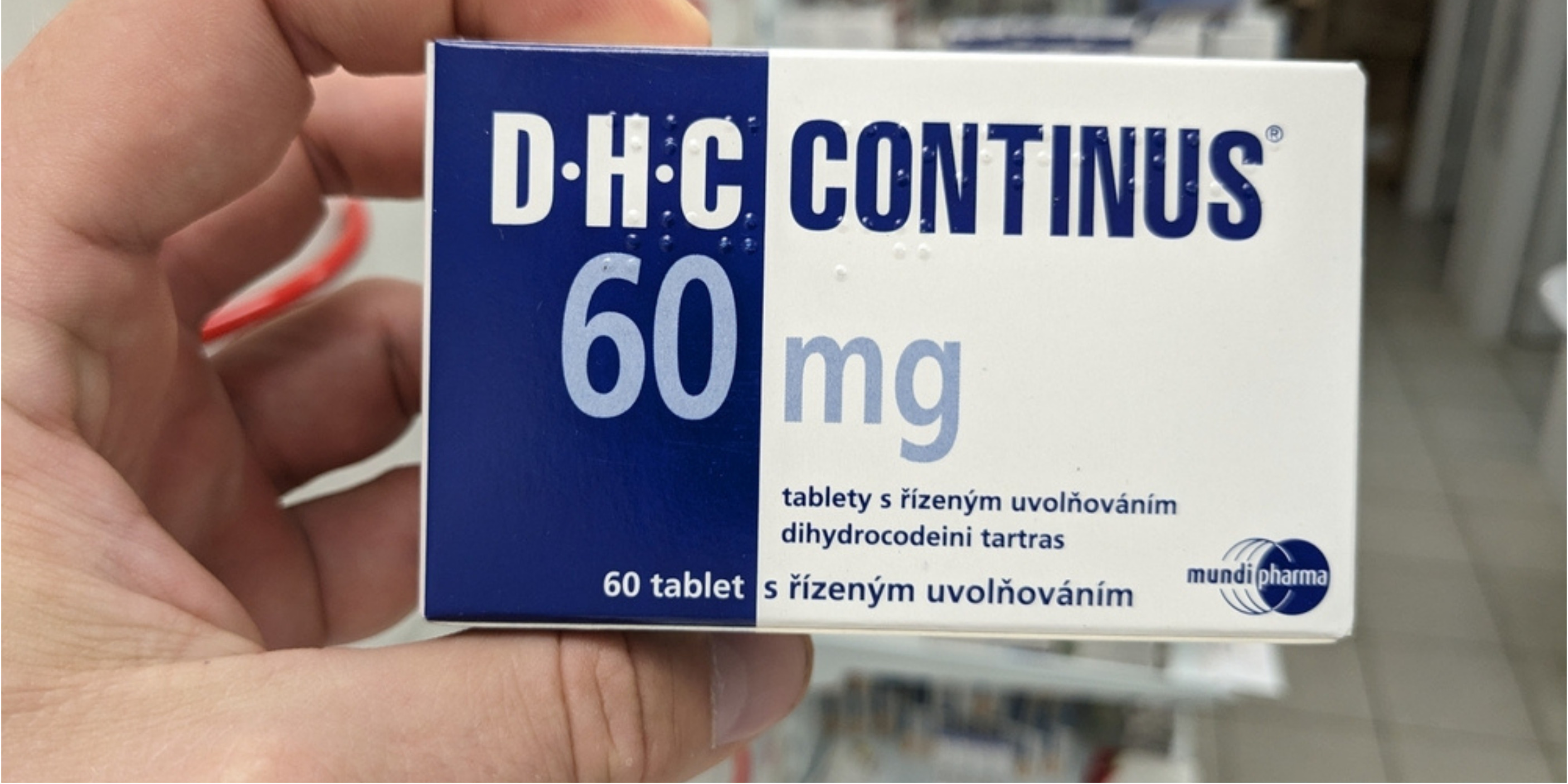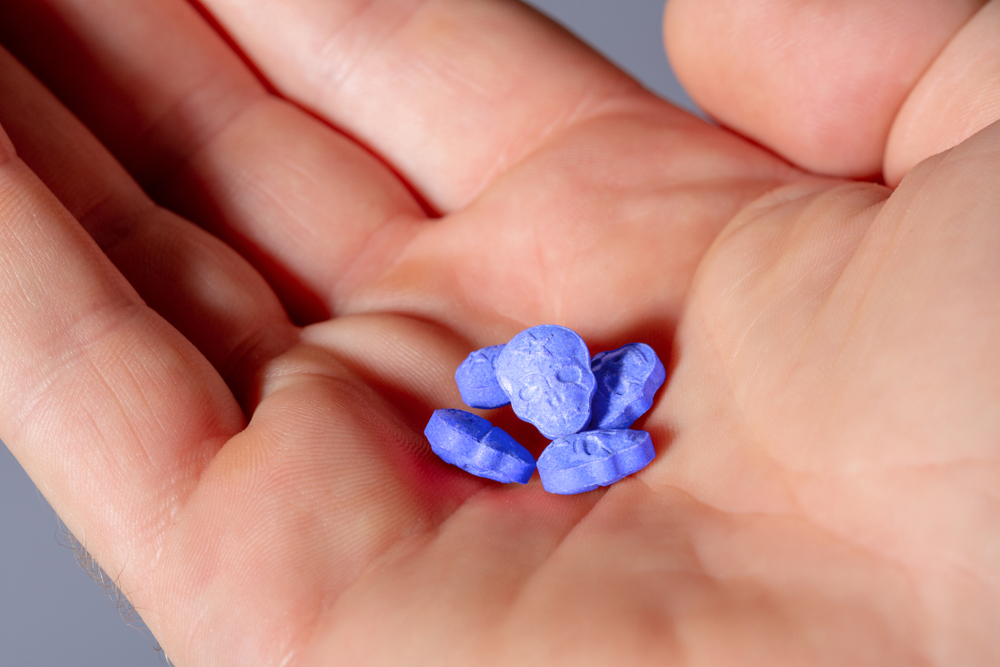Last Updated:
May 16th, 2025
Dihydrocodeine Abuse | Signs, Effects and Causes
Dihydrocodeine is a commonly prescribed opioid medication but its effectiveness can be a double-edged sword. While it can provide life-changing pain relief, dihydrocodeine also comes with a real risk of abuse and addiction. Dihydrocodeine addiction can ruin your health, derail your future and destroy your family life. This page dives into what drives dihydrocodeine addiction, the signs to watch for and how to get help if you become addicted.

What is dihydrocodeine?
Dihydrocodeine is an opioid medicine designed to increase the effectiveness of codeine. It works by interacting with your body’s opioid receptors, which helps dull the pain sensation. Doctors may prescribe dihydrocodeine for intense discomfort following surgery, persistent pain associated with cancer, severe coughs or when someone has difficulty breathing due to conditions like severe respiratory infections.
While all of these uses make dihydrocodeine an important medicine, it can also be tempting to use it for the wrong reasons. Taking dihydrocodeine without a prescription or in larger amounts than your doctor prescribes can seem like a good way to chill out and forget worries for a while. However, this kind of misuse is really risky and can lead to some unpleasant side effects such as:
- Dizziness
- Lightheadedness
- Constipation
- Nausea
- Dry mouth
- Dihydrocodeine addiction
These risks are why dihydrocodeine is a Class B drug in the UK with serious penalties for unlawful use, supply or possession.
What is dihydrocodeine addiction?
Dihydrocodeine addiction triggers a powerful urge to keep using the drug despite clear signs that it’s hurting you. It is a serious issue that often develops if dihydrocodeine is not used as directed such as to get high or to self-medicate.
Dihydrocodeine addiction usually starts with a growing tolerance. This basically means that the more dihydrocodeine you take, the less it does for you. To keep the high going or to keep pain at bay, you then start taking more and more. This constant influx tricks your brain into relying on dihydrocodeine as if it were a naturally occurring chemical. When you suddenly reduce the dose or stop altogether, your brain goes into a kind of shock, setting off severe withdrawal symptoms as it scrambles to adjust.
Dihydrocodeine addiction isn’t just a physical struggle, though. Over time, dihydrocodeine use transforms into a mental crutch, something you reach for to manage stress, trauma or personal hardships. This dual dependency – both physical and psychological – is the hallmark of full-blown dihydrocodeine addiction.
Spotting the warning signs of dihydrocodeine addiction
Identifying dihydrocodeine addiction early is crucial, but it’s not always straightforward, especially when the drug is legitimately prescribed for pain. However, there are specific dihydrocodeine addiction signs and symptoms that can help you recognise a growing problem:
- Increasing the dihydrocodeine dosage as the usual amount no longer suffices.
- Using dihydrocodeine without a prescription.
- Experiencing dihydrocodeine withdrawal effects like sweating, anxiety and nausea when you skip a dose.
- Hiding your dihydrocodeine usage from your loved ones or lying to your doctor about it.
- Frequently thinking only about when you will next take dihydrocodeine.
- Resorting to unsafe or legal practices to acquire more dihydrocodeine.
- Acting out of character, potentially engaging in theft or deceit to keep your habit going.
- Feeling trapped by your use of dihydrocodeine despite knowing its negative impact.

If these dihydrocodeine addiction symptoms sound familiar, it is important to get help immediately before it starts affecting your health and well-being.
What causes dihydrocodeine addiction?
Dihydrocodeine doesn’t lead to addiction for everyone who takes it. People react to its effects differently, making some more susceptible to dependency than others. The reasons for this variability are complex and involve several factors, including:
The mental and physical dangers of Dihydrocodeine addiction
Dihydrocodeine is a potent drug, and misusing it can lead to severe complications. Some of the biggest physical and mental dangers include:
Dihydrocodeine overdose
An overdose can happen if you take more dihydrocodeine than your body can handle or mix it with other drugs or alcohol. Dihydrocodeine is sometimes seen as a “weak” opioid, and some studies suggest that people may underestimate its potency, increasing the risk of overdose. Signs of dihydrocodeine overdose include trouble breathing, feeling extremely confused or losing consciousness. This is a medical emergency and getting help immediately is essential because it can be fatal – Even a single misuse can have life-threatening consequences.
Kidney and liver harm
Chronic abuse of dihydrocodeine places ongoing strain on your liver and kidneys, as they are responsible for breaking down and filtering the drug from your system. Over time, this constant pressure can impair their function, potentially leading to long-term or even irreversible damage. The liver may struggle to metabolize the drug effectively, while the kidneys may become less efficient at removing toxins. This can result in symptoms like fatigue, nausea, and swelling, and increases the risk of more serious conditions. Protecting these organs is vital to your overall health.
Escalation or onset of mental health issues
Constant misuse of dihydrocodeine can worsen mental health issues such as anxiety and depression, making it harder to manage emotions or cope with daily stress. The drug’s sedative effects can dull your thinking, reduce motivation, and make it difficult to stay focused on work, relationships, or personal goals. As dependence grows, you may start to withdraw from loved ones and lose interest in things that once mattered to you. Over time, this can create new psychological challenges.
How to overcome dihydrocodeine addiction
The path to beating oxycodone addiction typically involves an initial detox phase. This process, conducted under close medical watch, entails slowly cutting down your oxycodone consumption to reduce the impact of withdrawal. To make dihydrocodeine detox more bearable, a safer opioid like methadone may be introduced, helping to cushion the effects of the drug’s absence while keeping withdrawal symptoms in check.
Once you have navigated the initial detox, the journey through dihydrocodeine addiction recovery continues with targeted rehabilitation. This stage dives deep into the emotional and psychological drivers of your addiction. In the UK, both NHS and private facilities offer structured opioid rehab programmes, but private full-time residential care is often the most effective approach. This provides a focused setting that isolates you from everyday distractions and helps you concentrate on healing.
How to get help for dihydrocodeine addiction
If you are facing the challenges of dihydrocodeine addiction, know that effective help is available and accessible across the UK. The road to overcoming dihydrocodeine addiction is difficult, but we can help you find the right support to make recovery a reality. Get in touch with us today to begin exploring your options.
Our compassionate team are ready and available to take your call, and guide you towards lasting the lasting addiction recovery you deserve.
Frequently Asked Questions
(Click here to see works cited)
- UK Addiction Treatment Centres. “Understanding Dihydrocodeine.” UK Addiction Treatment Centres, 2 January 2024, https://www.ukat.co.uk/blog/substance-abuse/understanding-dihydrocodeine/. Accessed 17 January 2025.
- UK Rehab. “Dihydrocodeine Addiction | Causes, Symptoms and Diagnosis.” UK Rehab, https://www.uk-rehab.com/prescription-drug-addiction/opioid/dihydrocodeine/. Accessed 17 January 2025.
- GOV.UK. “Over-the-counter painkillers containing codeine or dihydrocodeine.” GOV.UK, 11 December 2014, https://www.gov.uk/drug-safety-update/over-the-counter-painkillers-containing-codeine-or-dihydrocodeine. Accessed 17 January 2025.
- Rock, Kirsten L et al. “Highlighting the hidden dangers of a ‘weak’ opioid: Deaths following use of dihydrocodeine in England (2001-2020).” Drug and alcohol dependence vol. 233 (2022): 109376. doi:10.1016/j.drugalcdep.2022.109376
NHS. “Dihydrocodeine: medicine for treating moderate to severe pain.” NHS, https://www.nhs.uk/medicines/dihydrocodeine/. Accessed 17 January 2025.

